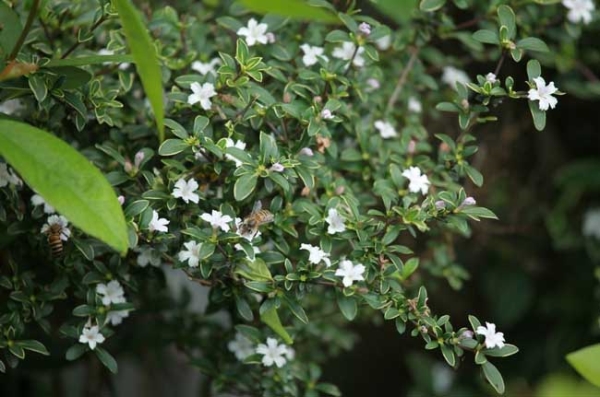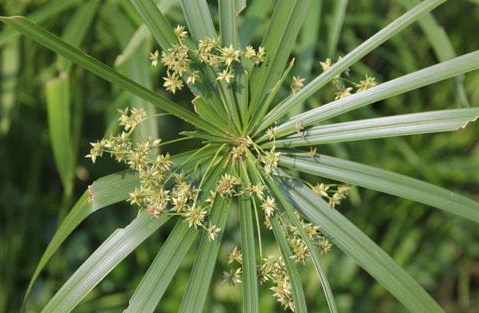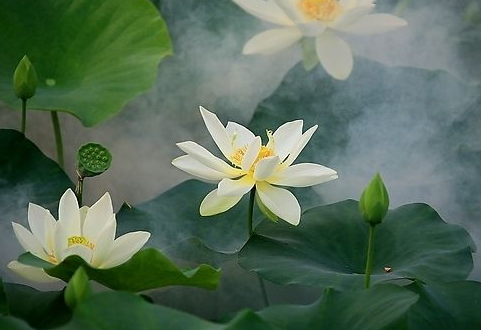Matters needing attention in Snow Culture in June
High temperature
When it is hot in summer, you should pay attention to watering frequently, sprinkle the leaves with clean water, and pay attention to proper shade, not in a place where the sun shines directly.

Pruning
Because the branches of June snow are soft and easy to stick. Therefore, the tillers germinating at the roots must be trimmed in time in order to maintain the graceful posture of the tree and improve its appreciation value.
Snow farming in June and matters needing attention
June snow is one of the commonly used Chinese bonsai trees, is the majority of horticulturists' favorite bonsai plants, June snowflake language: love, Acacia. What is the breeding method of June snow? What are the points for attention in the breeding of snow in June? Today, the editor will take you to learn about the breeding of snow in June. Let's have a look.
Culture method
June snow cultivation method June snow is not strict with the soil and is suitable for growing in loose and well-drained soil (fertile soil is better), but it should be noted that slightly acidic soil is more beneficial to the growth of June snow, which is similar to gardenia. The environment is very important for growing flowers, and June snow is no exception. June snow is wild (planted in open fields) in Liucheng and other areas of the Yangtze River, distributed in forests or streams, mostly on shady slopes. Like warm and humid environment, more cold-resistant, like Yang is also resistant to shade, but if it is a pot plant in June snow growth period should be placed in the semi-humid shade and other places, otherwise the light will be too strong and affect the growth, not conducive to ornamental. Snow in June likes fertilizer, so it should be given more fertilizer in daily maintenance, but it must be kept in mind that although it likes fertilizer more than snow in June, if it fertilizes too much, it will make the branches grow too much and easily cause new branches to grow, so it is generally only applied once before winter and once after flowering.
June snow has a certain ability to withstand drought and relatively likes water, but it is not resistant to water and dampness. watering should grasp the principles of dry and wet, not dry and not watered, prevent stagnant water in the basin in the rainy season, and put it on the side of the basin in rainy weather; when it is hot and dry in summer, it is necessary to spray water to the leaves sooner or later to cool down and increase air humidity to facilitate its growth and flowering. For watering, many flower friends really do not understand, dry and wet later, flower friends should learn to understand, potted plants are different from ground plants, potted plants are limited by a variety of factors, such as the depth of pots, the permeability of the soil, etc., so flower friends must not refer to the time when watering, but touch the soil, the best state should be damp, occasionally dry, which is more conducive to plant growth.
Matters needing attention
Precautions for the cultivation of snow in June generally speaking, February to March is the best time for transplanting, of course, Meiyu and late autumn are also good seasons. When transplanting, the pot chosen is purple sand basin and glaze basin, and the basin color should be dark, which can form a sharp contrast with the flower color. The basin soil is required to be sandy, which should be loose and rich in organic matter and good drainage. In addition, in the choice of fertilizer, pine needle soil, humus soil and peat can be mixed with each other, and about 10% rice husk ash should be added. The water and fertilizer management of snow in June should be suitable, not too dry or too wet, keep an appropriate amount of water in basin soil, reduce watering times in winter, and generally spray water on leaves for 1-2 times in summer. In addition, April to May is the best time to apply fertilizer, which can be irrigated with 0.5% phosphate and potassium fertilizer, and can be re-fertilized in winter to irrigate thin organic fertilizer. Heavy fertilizer is a big taboo. Turning the basin every other year can make the soil more loose and suitable for plant growth. At the same time, the removal of the old soil and proper pruning of the roots can also improve its ornamental value. In winter, plastic pruning should be carried out, long and short branches should be trimmed, and sparse and dense branches should be trimmed, which can not only remove messy branches and leaves, improve the aesthetic sense of ornamental, but also cut off the branches and leaves of diseases and insect pests. At the same time, through heart-picking, sprouting, removing branches, etc., to maintain a certain shape, elegant and moving. Snow in June generally has fewer diseases and insect pests, and occasionally there are aphids. At this time, you can use wind oil essence spray, you can kill aphids, but the concentration should not be too high, dilution 500 to 600 times is more appropriate. In addition, root rot sometimes occurs. At this time, it is irrigated with 800x solution of Gen Fuling or 600x-1000 times of 12% oleic acid copper EC and sprayed every other time for three times in a row. June snow culture methods, June snow culture matters needing attention
June snow is afraid of strong light, so usually maintenance needs to be shaded and placed in a cool place to prevent direct sunlight and absorb scattered light. The snow in June must be taken good care of in order to see its most prosperous scene. The following will give you a detailed introduction to the breeding methods and points for attention of June snow.
June snow culture method 1. June snow culture: soil selection
June snow is not strict with the soil, and grows best in soils that are loose, permeable and well vented.
2. Snow farming in June: sprinkling water
Keep the basin soil moist all the year round. Hot and boring summer, in addition to sprinkling water every day, but also need to spray foliage with water, or spray nearby ground, adhere to the relative humidity of the air. When the temperature drops in autumn, the amount of water sprinkled should be controlled step by step and watered once every 2 to 3 days. Water can be watered every 7 to 10 days in winter.
3. Snow farming in June: transplanting into pots
Generally speaking, February to March is the best time for transplanting, of course, Meiyu and late autumn are also good seasons. When transplanting, the pot chosen is purple sand basin and glaze basin, and the basin color should be dark, which can form a sharp contrast with the flower color. The basin soil is required to be sandy, which should be loose and rich in organic matter and good drainage. In addition, in the choice of fertilizer, pine needle soil, humus soil and peat can be mixed with each other, and about 10% rice husk ash should be added.
4. June snow farming: water and fertilizer management
The water and fertilizer management of snow in June should be suitable, not too dry or too wet, keep an appropriate amount of water in basin soil, reduce watering times in winter, and generally spray water on leaves for 1-2 times in summer. In addition, April to May is the best time to apply fertilizer, which can be irrigated with 0.5% phosphate and potassium fertilizer, and can be re-fertilized in winter to irrigate thin organic fertilizer. Heavy fertilizer is a big taboo.
June snow farming: light and temperature requirements
June snow likes a warm climate, slightly cold-resistant, the winter temperature is relatively low, the need to transfer to indoor training, indoor temperature can not be lower than 0 ℃, June snow if frozen, it is easy to die. June snow likes sunshine, warmth, moisture and ventilation. Therefore, maintenance should be carried out in these conditions during the growing season. Summer should be properly shaded, must not be exposed to the sun, winter should be moved indoors, to maintain a certain temperature, such as 5 to 12 degrees Celsius.
June snow farming: turning basin and pruning
Turning the basin every other year can make the soil more loose and suitable for plant growth. At the same time, the removal of the old soil and proper pruning of the roots can also improve its ornamental value. In winter, plastic pruning should be carried out, long and short branches should be trimmed, and sparse and dense branches should be trimmed, which can not only remove messy branches and leaves, improve the aesthetic sense of ornamental, but also cut off the branches and leaves of diseases and insect pests. At the same time, through heart-picking, sprouting, removing branches, etc., to maintain a certain shape, elegant and moving.
July snow farming: pest control
Snow in June generally has fewer diseases and insect pests, and occasionally there are aphids. At this time, you can use wind oil essence spray, you can kill aphids, but the concentration should not be too high, dilution 500 to 600 times is more appropriate. In addition, root rot sometimes occurs. At this time, it is irrigated with 800x solution of Gen Fuling or 600x-1000 times of 12% oleic acid copper EC and sprayed every other time for three times in a row.
Matters needing attention in snow farming in June are often fertilized.
In addition to normal fertilization, extra-root topdressing is often carried out. When growing up, topdressing can be carried out for 3 to 4 times, and leaves are sprayed with 1% potassium dihydrogen phosphate solution to regulate pH and add plant nutrients.
Prevent sun exposure in summer
Summer plants should be placed in a cool place and can be made of small-hole nylon mesh or plastic window screen to build a half-light shade, which can not only maintain ventilation, but also absorb scattered light.
Pay attention to ventilation in summer
Summer placed in indoor maintenance, the need to increase ventilation, otherwise the branches grow only, leaves yellowing, the lower leaves will fall a lot.
The basin needs to be changed in spring
Every year in March and June, the snow can be transferred outdoors, before the need to use decaying leaf soil for the basin, and at the bottom of the basin with the foot corner piece as the base fertilizer.
Breeding method of June snow
The propagation of June snow is mainly by cutting, and the methods of pressing strips and ramets can also be used.
Cutting propagation:
Snow is very easy to survive in June. When making miniature or miniature bonsai, in order to make it take shape as soon as possible, it is often carried out in the Meiyu season from June to July. Dormant branch cuttings are carried out from February to March, and semi-mature branches are carried out from June to July. Hardwood is usually used in early spring, but both hardwood and old branches can be used in plum rain season. After insertion, pay attention to watering, keep the seedbed moist, very easy to survive. When making miniature or miniature bonsai, in order to promote it to take shape as soon as possible, in June-July plum rain season, take graceful perennial branches with big trees, cut the lower incision into horseshoe shape, insert it into stone or sand, keep warm by covering film, pay attention to spraying water, take root in about 40 days, transplant it at this time, and form it with a little binding and pruning. Because this grass is easy to find in all parts of the mountain, some flower growers often dig it back directly from the forest and put it in the pot.
Intercalation method
Make use of the green open space, dig the soil loose, beat the soil mass fine and level it off. Spread the branches of the first to second nodes (about three centimeters) evenly on the ground prepared in advance, step on or press the topsoil with things, and pour water thoroughly. After that, spray water once every other day, and begin to take root and sprout branches after ten days. The first dilute liquid fertilizer was applied after 25 days. At 50 days, the seedlings were raised by applying 1000 times urea at a time. It can be transplanted and planted in two months. It can be cultivated in pot in four months, and can be planted for the first time at the same time. A year later, an ideal bonsai tree stump can be formed. It takes only half a year to make a hedge.
Cultivation and management
The management of snow planting in June is simple and extensive, and it can be planted in gardens in the south to form bushes. It is as white as snow in summer, giving people a sense of cool and elegant. It is usually used for plastic potted plants to watch or make stump bonsai. First of all, the plant is made into a single dry type, and then the lateral branches are trimmed and tied according to the modeling idea to make all kinds of bonsai, which can achieve the ideal effect.
- Prev

Water culture method of parasol grass
1. Water quality raise parasol grass can use lake water, river water, well water, sky fall water, tap water needs to rest for a day before it can be used, can not use mineral water. two。 Soak the root and the surface of the water at a distance of about 3 cm, not too deep. The root system can be pressed with pebbles to keep the plant stable. 3. Maintenance of high temperature in summer
- Next

Are lotus and lotus the same plant?
Lotus and lotus are the same plant, most of them are called lotus, which is also its earliest name,"there is Fu Su in the mountains, and there is lotus in the rain."
Related
- Fuxing push coffee new agricultural production and marketing class: lack of small-scale processing plants
- Jujube rice field leisure farm deep ploughing Yilan for five years to create a space for organic food and play
- Nongyu Farm-A trial of organic papaya for brave women with advanced technology
- Four points for attention in the prevention and control of diseases and insect pests of edible fungi
- How to add nutrient solution to Edible Fungi
- Is there any good way to control edible fungus mites?
- Open Inoculation Technology of Edible Fungi
- Is there any clever way to use fertilizer for edible fungus in winter?
- What agents are used to kill the pathogens of edible fungi in the mushroom shed?
- Rapid drying of Edible Fungi

